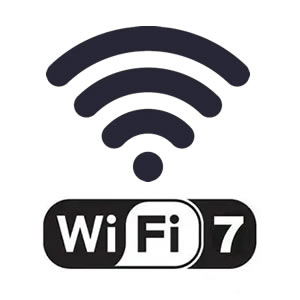With the explosive growth of data traffic and the rise of latency-sensitive applications such as AR/VR, cloud gaming, and remote work, wireless communication technology is undergoing another major evolution. WiFi 7 (IEEE 802.11be) has emerged to deliver higher bandwidth, lower latency, and enhanced multi-user capabilities.
As an industry leader in wireless innovation, Qualcomm has launched several WiFi 7-compliant System-on-Chip (SoC) solutions, among which the IPQ9574 and IPQ5424 stand out prominently. These two SoCs address different market needs, representing the cutting edge of WiFi 7 SoC design for high-end and mainstream segments respectively.
This article provides a comprehensive analysis of the IPQ9574 and IPQ5424 from multiple perspectives, including positioning, specifications, architecture highlights, application scenarios, and software ecosystem support.
1. Chip Positioning and Target Markets
-
IPQ9574
Targeted at high-end enterprise networks, flagship home routers, and industrial-grade wireless communications, emphasizing ultra-high performance, low latency, and massive connection density. Ideal for demanding networking environments. -
IPQ5424
Designed for mainstream home mesh systems and small-to-medium business (SMB) networks, focusing on an optimal balance between cost, performance, and power efficiency, enabling broader WiFi 7 adoption.
2. Core Specifications and Performance Comparison
| Feature | IPQ9574 | IPQ5424 |
|---|---|---|
| Process Node | 14nm FinFET | 14nm FinFET |
| CPU Architecture | Quad-core ARM Cortex-A73 | Quad-core ARM Cortex-A53 |
| CPU Frequency | Up to 2.2GHz | Up to 1.5GHz |
| WiFi Standard | IEEE 802.11be (WiFi 7) | IEEE 802.11be (WiFi 7) |
| Supported Bands | 2.4GHz, 5GHz, 6GHz (full tri-band) | 2.4GHz, 5GHz, 6GHz (tri-band) |
| Peak Wireless Throughput | Over 10Gbps | Around 5Gbps |
| Multi-Link Operation (MLO) | Supported, advanced multi-link scheduling | Supported, basic multi-link operation |
| Ethernet Interfaces | Multiple 10GbE ports supported | 2.5GbE port supported |
| Memory Interface | DDR4/DDR5, supporting high-speed caching | DDR4 |
| Peripheral Interfaces | PCIe 3.0, USB 3.0, SPI, I2C, and more | PCIe 3.0, USB 3.0, SPI, I2C |
| Industrial-Grade Variant | Supported (IPQ9574-IS) | Supported (IPQ5424-IS) |
3. Key Technological Highlights
1. Full Support for WiFi 7 Features
-
320MHz Ultra-Wide Channels: Both SoCs support this feature, drastically improving data transmission rates.
-
4K-QAM Modulation: Enhances spectral efficiency, boosting throughput compared to WiFi 6's 1024-QAM.
-
Multi-Link Operation (MLO) :
IPQ9574 offers advanced MLO scheduling, enabling simultaneous multi-band link aggregation for improved load balancing and redundancy. IPQ5424 supports basic MLO features. -
Enhanced Multi-User Capacity (MU-MIMO, OFDMA) :
Strengthens the network’s ability to handle multiple devices simultaneously, enhancing overall throughput and user experience.
2. High-Performance Wired Networking
-
IPQ9574 natively supports multiple 10GbE interfaces, ideal for enterprise-grade access points, high-speed backhaul, and flagship routers requiring maximum wired bandwidth.
-
IPQ5424 provides 2.5GbE support, sufficient for most residential and SMB use cases.
3. Energy Efficiency and Thermal Management
-
Both SoCs leverage advanced 14nm FinFET technology, achieving lower power consumption, making them suitable for battery-powered or always-on industrial applications.
-
IPQ9574 implements enhanced thermal management solutions to handle high-throughput scenarios efficiently, complemented by DDR5 memory support for faster cache operations.
4. Enhanced Security Features
-
Integrated high-performance cryptographic engines (e.g., AES, SHA accelerators) support a variety of security standards such as IPSec, SSL VPN, and WPA3.
-
Hardware-based Secure Boot and Trusted Execution Environment (TEE) provide robust system-level security from boot to runtime.
4. Typical Application Scenarios
| Application Field | IPQ9574 | IPQ5424 |
|---|---|---|
| Enterprise WiFi Access Points | ✔ | ✔ (for lighter APs) |
| Residential Mesh Systems | ✔ (high-end nodes) | ✔ (mainstream nodes) |
| Flagship Home WiFi Routers | ✔ | ✔ (mid-range WiFi 7 routers) |
| Industrial IoT Gateways | ✔ (high-performance models) | ✔ (power-efficient models) |
| Smart Building/Smart City Networks | ✔ | — |
| Wireless Backhaul/Outdoor Bridges | ✔ (10G backhaul applications) | — |
5. Software Ecosystem and Development Support
While hardware readiness is robust, full support in open-source platforms like OpenWRT and OpenWiFi is still evolving, especially for advanced features like MLO and 6GHz DFS certification.
-
Qualcomm's Official SDK (Networking Pro Platform SDK) supports all major features and is available for OEM deep customization.
-
Commercial Firmware: Several proprietary firmware solutions (for Mesh controllers, enterprise routers, etc.) have already adapted to IPQ9574.
-
Open Source Community:
Basic OpenWRT adaptation for both SoCs exists, but full support for MLO, advanced DFS on 6GHz, and WiFi 7 optimizations are still under active development as of 2025.
6. Conclusion
The IPQ9574 and IPQ5424 are pivotal in Qualcomm’s WiFi 7 product strategy, each occupying distinct but complementary roles:
-
IPQ9574:
A powerhouse focused on peak performance, large device capacity, low latency, and extensive feature expansion. It is ideal for high-end enterprise, flagship residential, and industrial applications. -
IPQ5424:
Designed to bring core WiFi 7 innovations to the mainstream market with superior energy efficiency and competitive pricing, accelerating the mass adoption of WiFi 7 technology.
As WiFi 7 continues to mature and the ecosystem evolves, these two SoCs are poised to drive the next wave of wireless networking innovations.



































